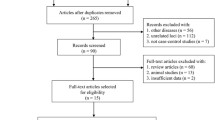Abstract
Multiple sclerosis (MS) is characterized as an autoimmune demyelinating disease. Numerous family studies have confirmed a strong genetic component underlying its etiology. After several decades of frustrating research, the advent and application of affordable genotyping of dense SNP maps in large data sets has ushered in a new era in which rapid progress is being made in our understanding of the genetics underlying many complex traits. For MS, one of the first discoveries to emerge in this new era was the association with rs6897932[T244I] in the interleukin-7 receptor alpha chain (IL7RA) gene (Gregory et al. in Nat Genet 39(9):1083–1091, 2007; International Multiple Sclerosis Genetics Consortium in N Engl J Med 357(9):851–862, 2007; Lundmark in Nat Genet 39(9):1108–1113, 2007), a discovery that was accompanied by functional data that suggest this variant is likely to be causative rather than a surrogate proxy (Gregory et al. in Nat Genet 39(9):1083–1091, 2007). We hypothesized that variations in other genes functionally related to IL7RA might also influence MS. We investigated this hypothesis by examining genes in the extended biological pathway related to IL7RA to identify novel associations. We identified 73 genes with putative functional relationships to IL7RA and subsequently genotyped 7,865 SNPs in and around these genes using an Illumina Infinium BeadChip assay. Using 2,961 case–control data sets, two of the gene regions examined, IL7 and SOCS1, had significantly associated single-nucleotide polymorphisms (SNPs) that further replicated in an independent case–control data set (4,831 samples) with joint p values as high as 8.29 × 10−6 and 3.48 × 10−7, respectively, exceeding the threshold for experiment-wise significance. Our results also implicate two additional novel gene regions that are likely to be associated with MS: PRKCE with p values reaching 3.47 × 10−4, and BCL2 with p values reaching 4.32 × 10−4. The TYK2 gene, which also emerged in our analysis, has recently been associated with MS (Ban et al. 2009). These results help to further delineate the genetic architecture of MS and validate our pathway approach as an effective method to identify novel associations in a complex disease.
Similar content being viewed by others
References
Ansel KM et al (2006) Regulation of Th2 differentiation and Il4 locus accessibility. Annu Rev Immunol 24:607–656
Australia and New Zealand Multiple Sclerosis Genetics Consortium (2009) Genome-wide association study identifies new multiple sclerosis susceptibility loci on chromosome 12 and 20. Nat Genet 41(7):824–828
Ban M et al (2009) Replication analysis identifies TYK2 as a multiple sclerosis susceptibility factor. Eur J Hum Genet 17(10):1309–1313
Baranzini SE et al (2009a) Pathway and network-based analysis of genome-wide association studies in multiple sclerosis. Hum Mol Genet 18(11):2078–2090
Baranzini SE, Wang J, Gibson RA (2009b) Genome-wide association analysis of susceptibility and clinical phenotype in multiple sclerosis. Hum Mol Genet 18(4):767–778
Barrett JC et al (2005) Haploview: analysis and visualization of LD and haplotype maps. Bioinformatics 21(2):263–265
Bertrams J, Kuwert E (1972) HL-A antigen frequencies in multiple sclerosis. Significant increase of HL-A3, HL-A10 and W5, and decrease of HL-A12. Eur J Neurol 7(74):78
Compston A, Coles A (2002) Multiple sclerosis. Lancet 359(9313):1221–1231
De Jager PL et al (2009) Meta-analysis of genome scans and replication identify CD6, IRF8 and TNFRSF1A as new multiple sclerosis susceptibility loci. Nat Genet 41(7):776–782
Ebers GC, Sadovnick AD, Risch NJ (1995) A genetic basis for familial aggregation in multiple sclerosis. Canadian Collaborative Study Group [see comments]. Nature 377(6545):150–151
Ebers GC et al (1996) A full genome search in multiple sclerosis. Nat Genet 13(4):472–476
Fry TJ, Mackall CL (2005) The many faces of IL-7: from lymphopoiesis to peripheral T cell maintenance. J Immunol 174(11):6571–6576
Gabriel S, Ziaugra L, Tabbaa D (2009) SNP genotyping using the Sequenom MassARRAY iPLEX platform. Curr Protoc Hum Genet, Chapter 2:Unit
Goverman J (2009) Autoimmune T cell responses in the central nervous system. Nat Rev Immunol 9(6):393–407
Gregory SG et al (2007) Interleukin 7 receptor alpha chain (IL7R) shows allelic and functional association with multiple sclerosis. Nat Genet 39(9):1083–1091
Haines JL et al (1996) A complete genomic screen for multiple sclerosis underscores a role for the major histocompatability complex. The Multiple Sclerosis Genetics Group. Nat Genet 13(4):469–471
Hauser SL, Goodkin DE (1998) Multiple sclerosis and other demyelinating diseases. In: Fauci AD et al (eds) Harrison’s principle of internal medicine. McGraw Hill, New York, pp 2409–2419
Hauser MA et al (2003) Genomic convergence: identifying candidate genes for Parkinson’s disease by combining serial analysis of gene expression and genetic linkage. Hum Mol Genet 12(6):671–677
Hennah W et al (2007) Families with the risk allele of DISC1 reveal a link between schizophrenia and another component of the same molecular pathway, NDE1. Hum Mol Genet 16(5):453–462
Hirschhorn JN et al (2002) A comprehensive review of genetic association studies. Genet Med 4(2):45–61
Hofmeister R et al (1999) Interleukin-7: physiological roles and mechanisms of action. Cytokine Growth Factor Rev 10(1):41–60
International Multiple Sclerosis Genetics Consortium (2005) A high-density screen for linkage in multiple sclerosis. Am J Hum Genet 77:454–467
International Multiple Sclerosis Genetics Consortium (2007) Risk alleles for multiple sclerosis identified by a genomewide study. N Engl J Med 357(9):851–862
International Multiple Sclerosis Genetics Consortium (2009a) The expanding genetic overlap between multiple sclerosis and type I diabetes. Genes Immun 10(1):11–14
International Multiple Sclerosis Genetics Consortium (2009b) Comprehensive follow-up of the first genome-wide association study of multiple sclerosis identifies KIF21B and TMEM39A as susceptibility loci. Hum Mol Genet [Epub ahead of print]
Jiang Q et al (2004) Distinct regions of the interleukin-7 receptor regulate different Bcl2 family members. Mol Cell Biol 24(14):6501–6513
Jiang Q et al (2005) Cell biology of IL-7, a key lymphotrophin. Cytokine Growth Factor Rev 16(4–5):513–533
Kisseleva T et al (2002) Signaling through the JAK/STAT pathway, recent advances and future challenges. Gene 285(1–2):1–24
Kumpfel T et al (2008) Multiple sclerosis and the TNFRSF1A R92Q mutation: clinical characteristics of 21 cases. Neurology 71(22):1812–1820
Kuokkanen S et al (1997) Genomewide scan of multiple sclerosis in Finnish multiplex families. Am J Hum Genet 61:1379–1387
Lundmark F (2007) Variation in interleukin 7 receptor alpha chain (IL7R) influences risk of multiple sclerosis. Nat Genet 39(9):1108–1113
McDonald WI et al (2001) Recommended diagnostic criteria for multiple sclerosis: guidelines from the International Panel on the diagnosis of multiple sclerosis. Ann Neurol 50(1):121–127
McGovern DP et al (2009) Genetic epistasis of IL23/IL17 pathway genes in Crohn’s disease. Inflamm Bowel Dis 15(6):883–889
Motsinger AA et al (2007) Complex gene–gene interactions in multiple sclerosis: a multifactorial approach reveals associations with inflammatory genes. Neurogenetics 8(1):11–20
Mumford GL et al (1994) The British Isles survey of multiple sclerosis in twins. Neurology 44(11):15
Naito S et al (1972) Multiple sclerosis: association with HL-A3. Tissue Antigens 2(1):1–4
O’Shea JJ (2004) Targeting the Jak/STAT pathway for immunosuppression. Ann Rheum Dis 63(Suppl 2):ii67–ii71
Ritchie MD et al (2001) Multifactor-dimensionality reduction reveals high-order interactions among estrogen-metabolism genes in sporadic breast cancer. Am J Hum Genet 69(1):138–147
Robertson NP et al (1996) Age-adjusted recurrence risks for relatives of patients with multiple sclerosis. Brain 119(Pt 2):449–455
Sadovnick AD, Ebers GC (1995) Genetics of multiple sclerosis. Neurol Clin 13:99–118
Sadovnick AD et al (1993) A population-based study of multiple sclerosis in twins: update. Annal Neurol 33:281–285
Sadovnick AD et al (1996) Evidence for genetic basis of multiple sclerosis. Lancet 347(1728):1730
Sawcer S (2008) The complex genetics of multiple sclerosis: pitfalls and prospects. Brain 131(Pt 12):3118–3131
Sawcer S et al (1996) A genome screen in multiple sclerosis reveals susceptibility loci on chromosome 6p21 and 17q22. Nat Genet 13:464–468
Sexton DP et al (2007) The Whole-genome Association Study Pipeline (WASP): a comprehensive tool for large-scale association studies. Am J Hum Genet 57:413S
Shirai Y, Adachi N, Saito N (2008) Protein kinase Cepsilon: function in neurons. FEBS J. 275(16):3988–3994
Steemers FJ et al (2006) Whole-genome genotyping with the single-base extension assay. Nat. Methods 3(1):31–33
Transatlantic Multiple Sclerosis Genetics Cooperative (2001) A meta-analysis of genomic screens in multiple sclerosis. Mult Scler 7(1):3–11
Wang WY et al (2005) Genome-wide association studies: theoretical and practical concerns. Nat Rev Genet 6(2):109–118
Wellcome Trust Case Control Consortium (2007) Genome-wide association study of 14, 000 cases of seven common diseases and 3, 000 shared controls. Nature 447(7145):661–678
Acknowledgments
This work was supported by a grant from the NIH R01NS32830. JLM was partially supported by a National MS Society (NMSS) Research Award (RG 4201-A-1). The International MS Genetics Consortium is supported by R01NS049477. PLD is a Harry Weaver Neuroscience Scholar awardee of the National MS Society (NMSS); he is also a William C. Fowler scholar in Multiple Sclerosis Research and is supported by an NINDS K08 grant, NS46341. LP was a Fellow of the National MS Society, USA (FG-1665-A-1) during these studies. DAH is a Jacob Javits scholar of the NIH. This work was also supported by the Wellcome Trust (084702/Z/08/Z), the Medical Research Council (G0700061), and the Cambridge NIHR Biomedical Research Centre. We also acknowledge the use of genotype data from the British 1958 Birth Cohort DNA collection, funded by the Medical Research Council grant G0000934 and the Wellcome Trust grant 068545/Z/02. The funders had no role in study design, data collection and analysis, decision to publish, or preparation of the manuscript. We acknowledge the use of genotype data from the British 1958 Birth Cohort DNA collection, and thank the Accelerated Cure Project for its work in collecting samples from subjects with MS and for making these samples available to IMSGC investigators. We also thank the following clinicians for contributing to sample collection efforts: Accelerated Cure project (Drs. Elliot Frohman, Benjamin Greenberg, Peter Riskind, Saud Sadiq, Ben Thrower, and Tim Vollmer); Washington University (Drs. B.J. Parks and R.T. Naismith). Finally, we thank the Brigham and Women’s Hospital PhenoGenetic Project for providing DNA samples from healthy subjects that were used in the Stage 2 follow-up effort of this study. We acknowledge the work done by the Center for Genome Technology Genotyping Core within the Miami Institute for Human Genomics (University of Miami), specifically Ashley Anderson and Luis Espinosa for aid in sample processing and genotyping. We also thank the Computational Genomics Core within the Center for Human Genetics Research (Vanderbilt University), specifically Justin Giles, Yuki Bradford, and David Sexton for their support in data processing.
Author information
Authors and Affiliations
Consortia
Corresponding author
Additional information
R. L. Zuvich and J. L. McCauley contributed equally to this work.
Electronic supplementary material
Below is the link to the electronic supplementary material.
Rights and permissions
About this article
Cite this article
Zuvich, R.L., McCauley, J.L., Oksenberg, J.R. et al. Genetic variation in the IL7RA/IL7 pathway increases multiple sclerosis susceptibility. Hum Genet 127, 525–535 (2010). https://doi.org/10.1007/s00439-010-0789-4
Received:
Accepted:
Published:
Issue Date:
DOI: https://doi.org/10.1007/s00439-010-0789-4




